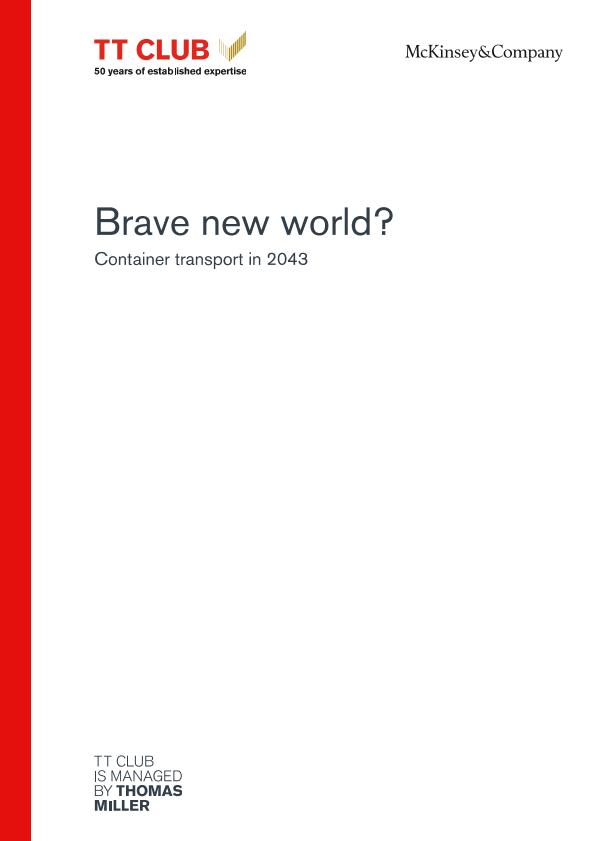Brave new world? : container transport in 2043

Contenido multimedia no disponible por derechos de autor o por acceso restringido. Contacte con la institución para más información.
| Tag | 1 | 2 | Valor |
|---|---|---|---|
| LDR | 00000cam a22000004b 4500 | ||
| 001 | MAP20200011729 | ||
| 003 | MAP | ||
| 005 | 20200413175631.0 | ||
| 008 | 200408s2020 usa|||| ||| ||eng d | ||
| 040 | $aMAP$bspa$dMAP | ||
| 084 | $a922.113.1 | ||
| 245 | 1 | 0 | $aBrave new world?$b : container transport in 2043$cCharles Fenton...[Et al.] |
| 260 | $aNew York$bMcKinsey & Company$bTT Club$c2020 | ||
| 300 | $a80 p. | ||
| 520 | $aThe container transport industry has been at the centre of the incredible expansion in international trade since the 1950s. Commercialised in 1956, the container's simplicity and modularity has made it the mode of choice for the transport of many goods from one place to another: containers today transport 23% of dry seaborne trade tons (and close to 100 percent of everyday goods like televisions, toys, and clothing). Consumers have benefited enormously as the real cost of transporting goods has fallen. However, the success of the container has not always meant the financial success of the industry behind it. Returns for the average container liner operator, container terminal operator, or freight forwarder have lagged the cost of capital over the last two decades and only a select few players have managed to find a sustainable recipe for value creation | ||
| 650 | 4 | $0MAPA20080615727$aTransporte de mercancías | |
| 650 | 4 | $0MAPA20080561901$aContenedores | |
| 650 | 4 | $0MAPA20080605100$aComercio internacional | |
| 650 | 4 | $0MAPA20080594091$aTransporte marítimo | |
| 650 | 4 | $0MAPA20080573799$aSector marítimo | |
| 650 | 4 | $0MAPA20080551520$aLogística | |
| 710 | 2 | $0MAPA20080442569$aMcKinsey & Company | |
| 710 | 2 | $0MAPA20200007579$aTT Club |

